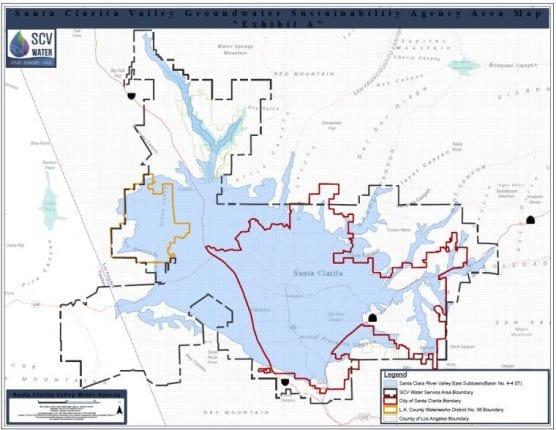SCV Water’s recent quarterly well sampling detected toxic PFAS in excess of the state’s nonregulatory notification levels for the chemicals in 20 wells, the agency announced Wednesday.
Tests showed excess levels of perfluorooctanoic acid, or PFOA, and perfluorooctanesulfonic acid, or PFOS, two chemicals within a class of chemicals known as PFAS.
This is in addition to eight wells identified during the first round of sampling in May.
Per- and polyfluoroalkyl substances or PFAS are a group of manmade chemicals prevalent in the environment and commonly used in industrial and consumer products to repel grease, moisture, oil, water and stains.
These chemicals enter the environment through treated wastewater discharge, landfills and areas where the substances were used outdoors. Exposure to these chemicals may cause adverse health effects.
The State Water Resources Control Board – Division of Drinking Water’s recently lowered the notification levels and are the most stringent in the nation.
“Like many communities across the nation, we are finding tiny amounts of PFAS in our water supply. We are taking immediate steps to tackle these substances through new strategies and proven treatment options,” said SCV Water General Manager Matt Stone.
“Our customers are our top priority, and we are committed to rigorously testing and treating our water thousands of times per year to ensure it meets or surpasses all water-quality standards and is safe to drink for our customers,” Stone said.
In August, the updated state guidelines lowered the notification levels by more than half, to 6.5 parts per trillion for PFOS and 5.1 ppt for PFOA.
Under these new levels, more wells fell within notification levels. One well was removed from service in May when it exceeded DDW’s interim response level of a combined 70 ppt for PFOS and PFOA.
This interim response level is expected to be reviewed by the DDW this fall.
For perspective, one part per trillion is a microscopic measurement for something in the water and would be equal to four grains of sugar in an Olympic-size swimming pool.
Notification levels are a nonregulatory, precautionary reporting level for concentrations in drinking water that warrant notification and further monitoring and assessment.
When water registers above the notification level, it is reported to the DDW, as well as the SCV Water governing board, the Santa Clarita City Council, and the Los Angeles County Board of Supervisors within 30 days of official results from the testing laboratory.
Results were scheduled to be presented to the SCV Water Board on Tuesday, and the list of wells was subject to change if further sampling results were received by then.
Customers are notified through SCV Water’s annual Consumer Confidence (Water Quality)
Report as well as the water agency’s website and e-newsletter.
“We are committed to transparently communicating all water quality changes and how we plan to address them with our customers,” Stone said.
SCV Water continues to monitor its groundwater supplies through proactive quarterly sampling and will rely on its diverse water supply portfolio, including imported and banked water sources, in order to minimize any supply impacts to its customers.
Additionally, SCV Water encourages customers to continue to use water efficiently in their homes and on their landscapes.
SCV Water is evaluating treatment options to remove PFAS chemicals and has assembled a team of staff and industry experts to develop a plan to address the issue. A new $5 million quick-start water treatment facility is in the works for three agency wells next to the William S. Hart Baseball/Softball League ballfields.
This project is an investment in the long-term water supply and will provide treatment for a substantial portion of groundwater impacted by PFAS chemicals. The project will treat up to 6250 gallons of water per minute. On average, it will be enough water to
serve more than 5,000 families for a year.
SCV Water is one of more than 200 water systems in California required to sample for PFOS and PFOA chemicals this year.
For more information and resources on PFAS, visit yourSCVwater.com/pfas.
Like this:
Like Loading...
Related





 Tweet This
Tweet This Facebook
Facebook Digg This
Digg This Bookmark
Bookmark Stumble
Stumble RSS
RSS

























REAL NAMES ONLY: All posters must use their real individual or business name. This applies equally to Twitter account holders who use a nickname.
1 Comment
Hi, what about Castaic area water?